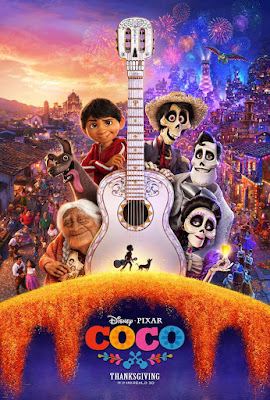The primary point of discussion about Ridley Scott’s
true-life story about the 1970’s Getty kidnapping has been the 11th-hour
recasting of lead actor Kevin Spacey. With just over a month before release,
Spacey, in the pivotal role of J. Paul Getty, was completely cut out of the
film and replaced by Christopher Plummer. It was an unprecedented move for
Ridley Scott or any other director, and besides completing the film on time
(which they did), the question became if the reshooting and re-editing would be
seamless enough to save the film.
Billionaire J. Paul Getty (Plummer), refuses to pay the
ransom for his kidnapped grandson Paul (Charlie Plummer), and assigns his oil
negotiator Fletcher Chase (Mark Wahlberg), to assist Paul’s mother Gail (Michelle
Williams) in finding the boy.
ALL THE MONEY IN THE WORLD is a nice mashup of several
genres of film; ranging from a caper, family drama, to global espionage. After
the well-executed kidnapping scene, the film goes into extended flashback mode
to detail the dynamic of the Getty family; exploring the rise to riches and the
testy relationship J. Paul has with his son, daughter-in-law, and grandsons. It
seems by the book, but this does great work in establishing J. Paul as a
complicated man; rich but penny-pinching, and a want to keep family close not
out of love but out of a desire to own things.
Once the backstory is out of the way and the film catches up
with itself, Scott shifts gears into a globe-trotting exercise as things
dizzyingly zip around from continent to continent, following Chase and Gail as
they negotiate with the kidnappers with or without the money of J. Paul. After
such great character work in the early goings, MONEY grows cold as those characters
are kept at a distance in favor of the important events of history. The film
ticks away from setpiece to setpiece, location to location, argument to
argument…with very little character work done. There are few laughs and not
many tears to be had here despite family being the center of things.
Still, Ridley Scott puts together a hell of a film. Tension
is built beautifully; from the kidnapping, an escape attempt, and the white-knuckled
climax with all interested parties converging nicely. Pacing is brisk with very
few dull moments, and the film looks fantastic. The million-dollar-question of
the Plummer edits is that for the most part, the editing is seamless. There is
one shot where Plummer is superimposed via green-screen which looks really bad,
and Spacey may actually be seen in one wide-shot, but everything else is
perfect and impressively done.
Acting is excellent. Christopher Plummer puts in one of his
best performances in his long and storied career. He’s ruthless and cold but
complicated, and Plummer draws us in. Mark Wahlberg doesn’t get a lot of heavy
lifting but is fine, and Charlie Plummer as the kidnapped kid goes through a
lot and does very well. But the film absolutely belongs to Michelle Williams,
who as the frenetic and heartbroken mother goes through
every bit of emotion there is.
Anyone who is familiar with the true events of the
kidnapping won’t be overly surprised at the third act or the finale (despite
some major liberties taken), but the journey to get there is well worth it. ALL
THE MONEY IN THE WORLD isn’t much of a character piece and certainly won’t warm
any hearts, but it is a solid telling of an often forgotten part of history.
BOTTOM LINE: See it























